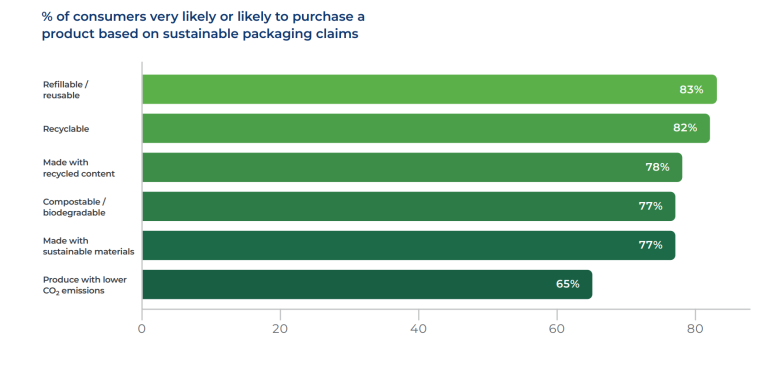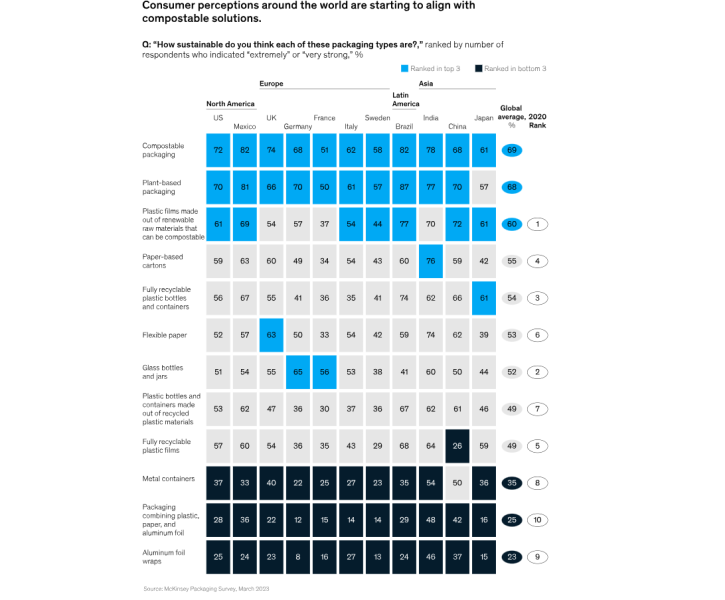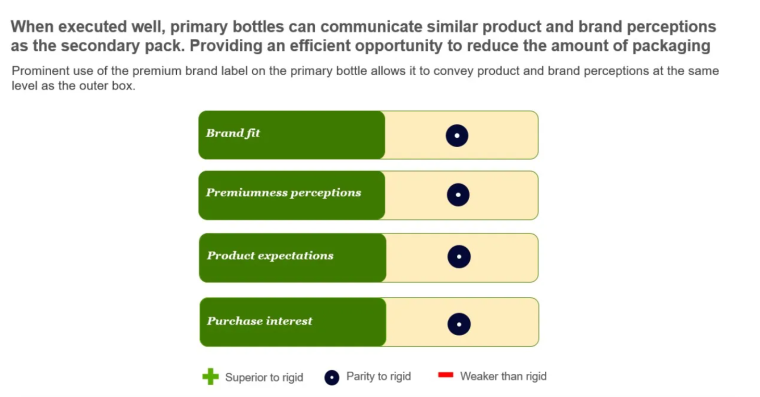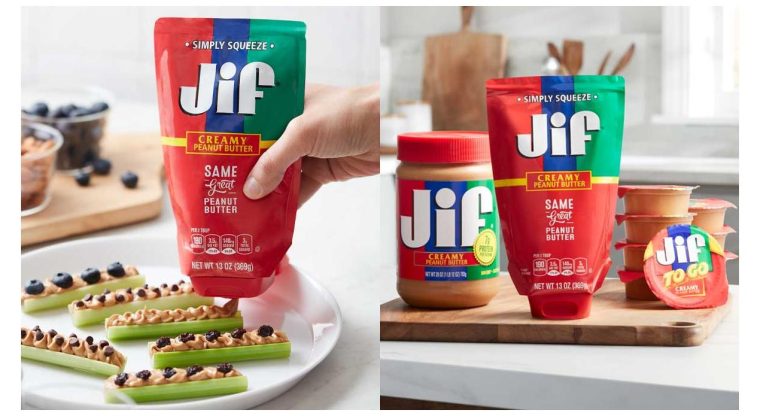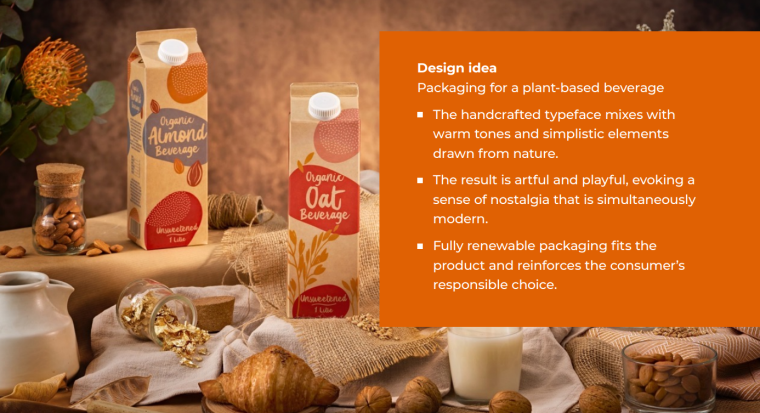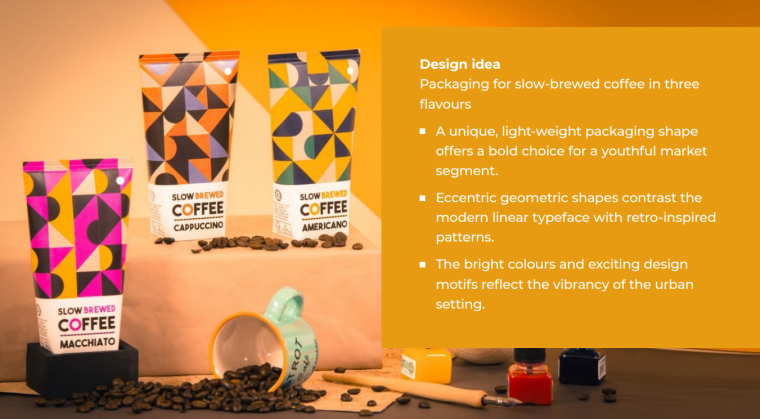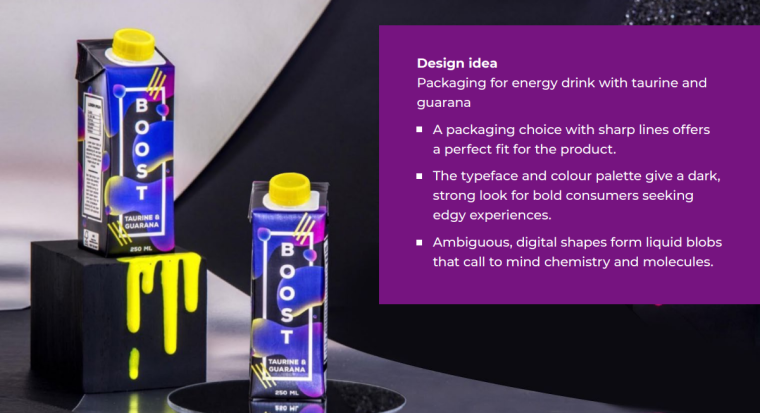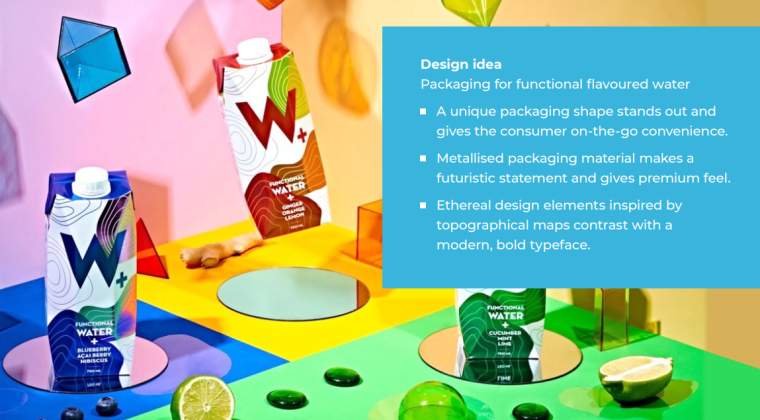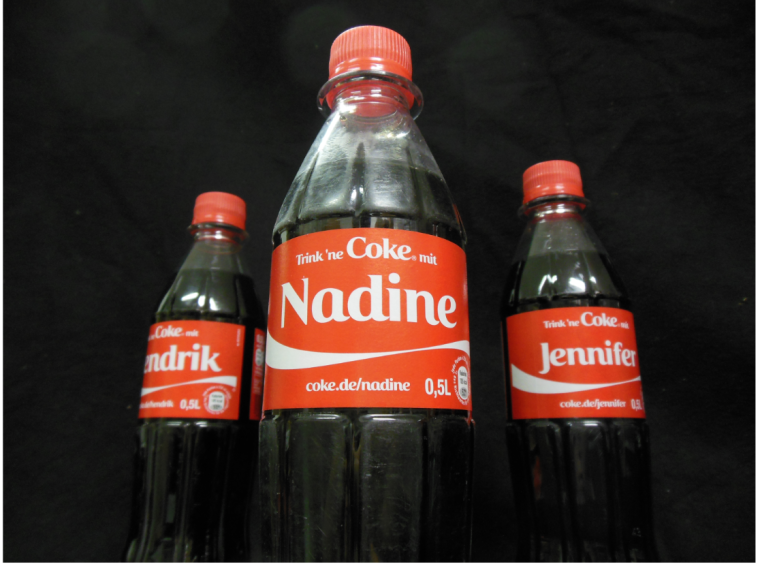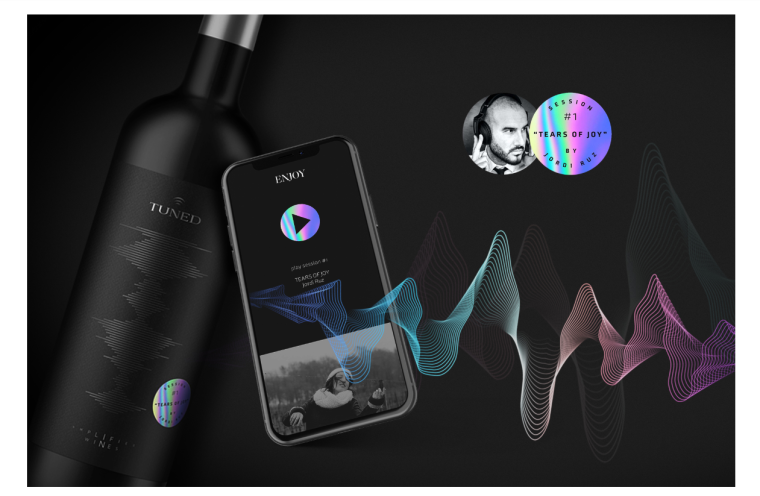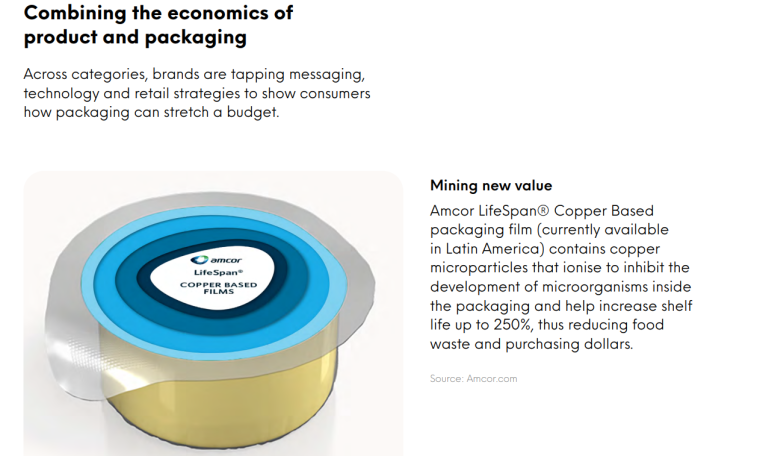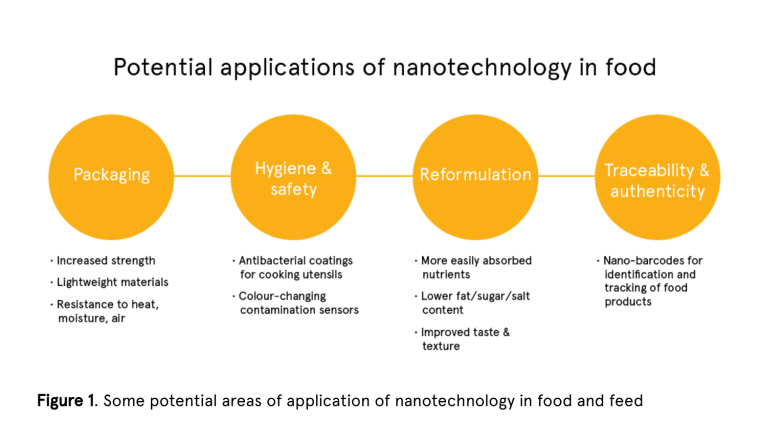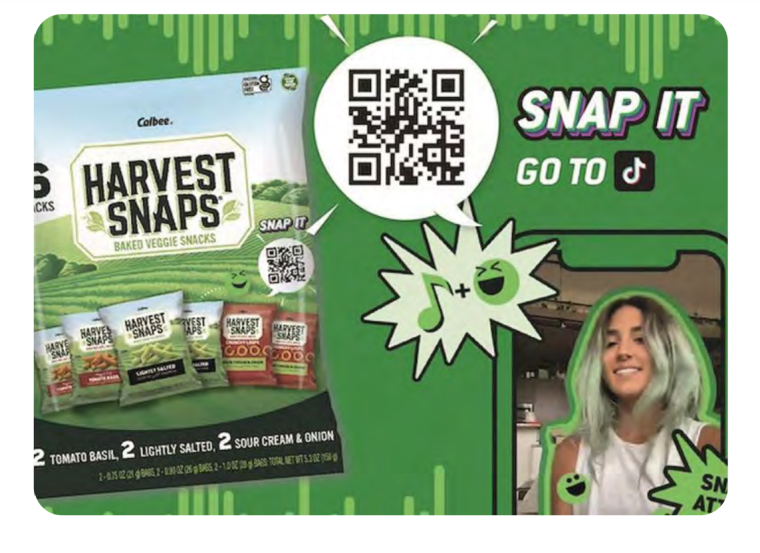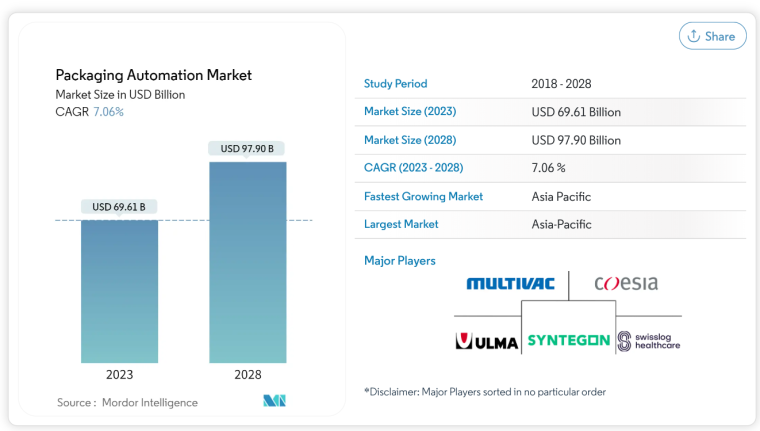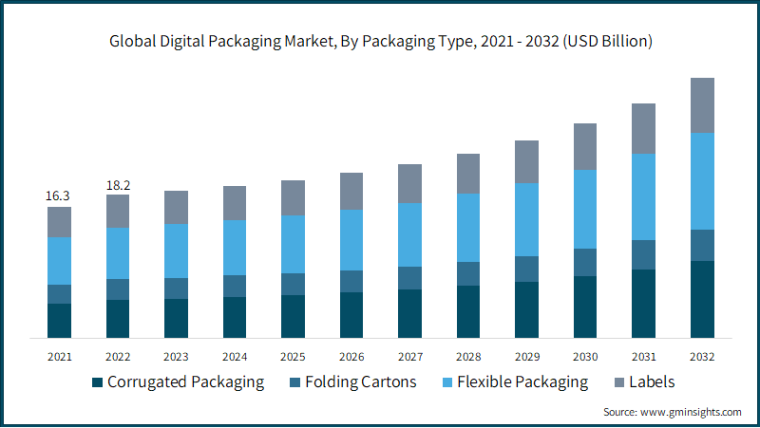Packaging serves as a powerful tool for brands to communicate their identity, values, and promise to consumers. It is also a key element of the customer experience, influencing purchase decisions and brand loyalty so understanding packaging trends is important for your company.
Keeping up with the latest packaging design trends is the edge brands need to cut through the competition, boost sales, increase customer engagement, and foster brand loyalty. That’s why we’ve used our expertise at Business2Community to deliver the top 9 packaging industry trends for 2025 and beyond.
Key Packaging Trends
- 25% of consumers have purchased a product because the packaging was appealing.
- 79% of consumers seek products in sustainable packaging.
- 80% of consumers are interested in buying products that come in refillable packaging to reduce their environmental impact.
- 20 of the largest fast-moving consumer goods (FMCG) manufacturers have committed to 100% recycled packaging by 2030.
- 43% of consumers now expect personalized product packaging.
What are 2025’s Packaging Trends?
The right packaging can solve complex challenges such as product safety and sustainability, while also elevating product perception and influencing purchasing behavior. In fact, 25% of consumers have purchased a product solely because the packaging was appealing.
Given the many benefits of packaging, consider the 9 trends explored below as a roadmap to effective packaging.
1. Sustainable Packaging is in Demand
As consumer awareness around climate change and sustainable living grows, one of the biggest packaging trends for 2025 is sustainable packaging. Within this trend, circular, minimalistic, and refillable packaging are the key areas businesses need to focus on.
According to a 2023 Trivium report, more than 79% of consumers sought products in sustainable packaging. Additionally:
- 80% of consumers are interested in buying products that come in refillable packaging to reduce their environmental impact.
- 82% of consumers across age demographics are willing to pay more for sustainable packaging, up 4 points from 2022, and 8 points since 2021.
- 71% have chosen a product based on its sustainability credentials in the last six months.
- 63% of consumers are less likely to buy products in packaging that isn’t environmentally friendly.
The report also indicated that even with growing interest in sustainable packaging, 28% of consumers still don’t know which sustainable features to look for in products. This means that brands wanting to benefit from this trend should prioritize giving consumers clearer information about their packaging with effective messaging.
2023 research by NYU Stern Center for Sustainable Business (CSB) and Edelman showed that effective sustainability messaging can enhance brand reach among consumers by up to 33%.
According to the same research, effective sustainability messaging:
- Avoids technical sustainability claims or jargon and focuses on the result, not the process.
- Links sustainability claims to a consumer’s life and refers to personal benefits.
Circular Packaging
This subset of sustainable packaging focuses on creating packaging that can be easily and effectively recycled or repurposed.
Despite numerous innovations in green packaging, a switch from plastic to biodegradable and recyclable materials remains the most effective way to support a sustainable economy.
Bio-polymers, post-consumer resins (PCRs), and plant-based packaging are increasingly replacing plastic packaging. Not only are these alternative materials economical, but they also mitigate plastic pollution and reduce businesses’ carbon footprints.
2023 research by McKinsey suggested that no single material is an absolute leader among these sustainable alternatives. However, global consumer perceptions around the world are starting to align with compostable and plant-based packaging.
In the US alone, over 70% of consumers now consider compostable and plant-based packaging as extremely sustainable packaging solutions.
82% of consumers are more likely to purchase a product whose packaging is recyclable, while 78% would purchase products whose packaging is made with recycled content.
The biggest brands are taking notice, in fact, according to the Consumer Brands Association, 20 of the largest FMCG manufacturers in the world have committed to 100% recycled packaging by 2030.
Nielsen IQ (NIQ) conducted research to understand how sustainable packaging influences brand perceptions and purchasing decisions. In terms of packaging made from recycled or recyclable materials, brands are encouraged to do the following:
- Highlight all sustainability benefits and claims clearly.
- Seek shopper feedback to ensure packaging aligns with shopper expectations, tackles hesitation, and enhances the overall experience.
- As shoppers often rely on established visual cues when making purchasing decisions, packaging should fit within the existing norms of the product category.
Minimalist Packaging
Minimalist packaging, which involves the removal of any secondary packaging, can be an effective way to eliminate waste, promote sustainability, and reduce costs.
The NIQ research found that this approach works well, even for premium brands. Key actionable insights include:
- Ensure primary packaging displays a brand logo and key assets clearly.
- Lean into other premium cues in the primary packaging, like embossing and label materials.
- Use interior packaging designs to elevate the unboxing experience.
Flexible Packaging
This category of packaging is made of materials such as plastic films, laminates, pouches, and other non-rigid structures that are pliable and can conform to the shape of the product they contain.
Flexible packaging is more sustainable and uses up to 80% less material than traditional formats. It also has added benefits such as cheaper production, lower logistics costs, convenience, and product protection.
For example, Smucker’s adopted a patented flexible stand cap pouch for its Jif peanut butter brand. The packaging used 63% less plastic by weight, generated 62% less greenhouse gas emissions, and 52% less landfill waste.
Additionally, the packaging manufacturer simulated a retail environment to show that consumers noticed the new Jif packaging 40% faster and looked at it 53% longer than traditionally packaged products.
As flexible packaging options such as soy packs (stand-up pouches) and refillable packaging solutions gain momentum, the NIQ report provided guidelines on how brands can maintain product perceptions:
- Ensure branding, color, and graphics are emphasized on packaging to help shoppers overcome the loss of familiar pack shapes and forms.
- Add sustainability claims to packaging to help shoppers quickly understand the environmental benefits of flexible packaging.
2. Trend-Inspired Packaging Design is on the Rise
From the use of brand mascots to textured packaging, brand owners are intensifying their packaging design efforts to stand out and attract more consumers.
For example, through extensive research into market trends and consumer behavior, Tetra Pak forecasted some of the key packaging design trends for 2023 and beyond.
Modern eco-consciousness is a design trend that embraces a sense of responsibility and sustainability by drawing inspiration from the past. It combines handcrafted traditions with a modern, eco-conscious perspective.
The color palette features warm, autumn tones for a natural and sustainable feel and gold accents for a premium touch.
Key themes include:
- Handcrafted quality
- Artful recycling
- Sustainability
Inclusivity and cultural unity as a design trend uses symbolism and imagery that connects people around the world.
The color palette features bright colors, and simple primary and secondary colors for an urban, retro feel.
Key themes include:
- Modern graphics
- Patterns
- Industrial nostalgia
The ultra-modern aesthetic design trend seeks to excite the senses, capturing the fascination and fear of a new digital age.
The color palette features dark tones and contrasting neon/fluorescent colors.
Key themes include:
- Bold glowing typefaces
- Glossy surfaces
- Artificial textures
- Edgy, contemporary looks
Futuristic vision is a design trend explores shape, color, and light to create futuristic, ethereal effects.
The color palette includes vibrant hues of red, greens, and blues. It also features oxidized effects, transparency patterns, and gradients for a futuristic look.
Key themes include:
- Reflective surfaces patterns
- Glowing reflections
- Digital inspiration
- Transparent materials
Meanwhile, brand mascots and characters can boost profits and emotional engagement with customers by as much as 41%.
While these mascots have always worn the same clothes and maintained a consistent look across all touch points and packaging, brands are now adding variation to their mascot’s appearance.
Through fun twists such as new clothes and more, these variations successfully promote different features and product types.
Transparent packaging is also experiencing a resurgence, as it allows brands to gain consumer trust while maintaining product authenticity.
The global transparent packaging marketing is worth $141 billion in 2023 and is expected to grow by a CAGR of 5.89% to hit $250 billion by 2033.
This packaging design trend is being driven by the growing demand for transparency in ingredients, minimalist design trends, and innovations in personalized packaging.
3. Shifting Customer Expectations are Leading to New Trends
West Rock, which has been tracking consumer trends since 2012, found, in a 2022 survey that:
- 75% of consumers say packaging should reflect the content inside.
- 63% say that premium packaging elevates their perception of a product.
Safety and function drive continue to drive packaging satisfaction, brand trust, and purchasing behavior.
- 80% of consumers say packaging that keeps a product safe impacts satisfaction.
- 74% of consumers say packaging made from materials that prevent products from leaking or breaking significantly impacts online purchase decisions.
- 66% of consumers say packaging materials that maintain the temperature of a product build brand trust.
4. Consumers Now Expect Personalized Packaging
90% of consumers find personalization appealing and 43% now expect personalized packaging.
In an increasingly competitive business landscape, personalized packaging provides an opportunity for brands to stand out and connect with customers. It can also:
- Increase brand engagement
- Foster brand loyalty
- Promote social sharing
- Increase sales
It’s no wonder the personalized packaging market is set to grow at a significant CAGR of 5.28% and hit $60 billion by 2033.
5. Smart Packaging is Increasingly Used
Driven by its ability to enhance consumer engagement, product traceability, and sustainability, smart packaging is a growing packaging trend.
Smart packaging leverages technology such as QR codes, smart labels, RFID tags, sensors, and near-field communication (NFC) chips.
These cutting-edge solutions offer businesses benefits such as security tracking, authentication, connectivity, and deeper insights into consumer behavior.
Smart packaging can also be used to elevate the customer experience. For example, using an NFC sticker tag, Tuned Wine transforms wine bottles into a dynamic tasting and listening experience. Each bottle of wine is paired with unique music for an exclusive way to enjoy wine at home.
Active Packaging
According to the UN, around 17% of total global food production is wasted. In response, the use of active packaging — a type of smart packaging that extends the shelf life of perishable products — is on the rise.
This growing packaging industry trend works by emitting or absorbing compounds within a packaged product, slowing the rate of microbial growth, moisture loss or gain, and oxygen reactions. It is also responsible for other trends like edible packaging.
Due to its effectiveness, active packaging is also finding applications in the beverage and pharmaceutical industries. The global active packaging market is projected to grow from $15.21 billion in 2023 to $22 billion by 2030.
As adoption increases, more brands stand to:
- Reduce waste
- Drive supply chain efficiencies
- Improve product safety and quality
- Increase profits
For example, innovations like Amcor’s copper-based packaging film use copper microparticles to ionize and inhibit the growth of microorganisms, extending product shelf life by up to 250%.
Edible Packaging
With a growing shift towards eco-friendly products, edible packaging is gaining popularity as an alternative to conventional packaging solutions.
Made from biodegradable, plant-based materials that can be eaten, edible packaging addresses challenges such as reducing waste and environmental impact.
As such, the global edible packaging market is anticipated to grow from $710 million in 2023 to over $1 billion in 2030.
Nanotechnology
From packaging material to product safety, authentication, and tracking, nanotechnology is expected to have a major impact on the various phases of the packaging supply chain.
The use of nanoparticles mixed with polymer chains enhances package barrier properties and tensile strength. It also enables tracking and anti-counterfeiting capabilities for brands and packaging companies.
Over the next five years, nanotech is expected to account for 25% of the entire food packaging industry.
In food packaging, nanotechnology powers packaging with superior barrier, mechanical, thermal, antioxidant, and antimicrobial qualities. This extends the shelf life of food products, improving food safety, and reducing food waste.
6. Interactive Packaging Continues to Grow in Use
Interactive packaging incorporates engaging designs to create memorable customer experiences. By using elements such as QR codes and augmented reality (AR), brands are able to increase customer interaction and foster brand loyalty.
Successful examples include:
- Amaro Montenegro offers an AR experience through Viewtoo and Armando Testa. Consumers can explore product details by framing different parts of the packaging, revealing production insights, cocktail tips, and product information.
- US plant-based snack brand Harvest Snaps uses an on-pack QR code to engage younger consumers and inspire them to create their own music on TikTok.
7. Packaging Automation will be the Norm
As the packaging industry grapples with significant challenges, including productivity, precision, and quality control, many brands are turning to packaging automation.
Automation in packaging encompasses tasks like depanning, filling, packing, and palletizing. It also involves the integration of robotic arms and grippers, which eliminates human error and guarantees the safe handling of fragile products.
The packaging automation market is expected to grow from $69.61 billion in 2023 to $97.90 billion by 2028, at a CAGR of 7.06% between 2023 and 2028.
Other AI Applications
Other innovations in the field include artificial intelligence (AI) powered vision systems that analyze the package quality of finished goods. These vision-assisted robots automate processes such as product sorting, quality control, and inspection to increase overall efficiency.
CO2 AI, an AI-powered digital solution from the Boston Consulting Group, helps retailers, e-retailers, brands, and package manufacturers quantify and reduce emissions at scale.
8. Printing Advancements are Game-changing
Digital and 3D printing advancements are revolutionizing the packaging industry by enhancing visual appeal, streamlining processes, and reducing costs.
Conventional package printing methods come with challenges such as accuracy issues, low color quality, and high costs.
Digital printing provides shorter lead times, cost-effective custom packaging design, and less waste, making it a more efficient option. As there is no need for water, photo chemicals, or pre-press processes, it is also more sustainable.
In fact, digital printing can reduce supply chain waste by up to 26% and cut the carbon footprint of printing by up to 80%.
The global digital printing packaging market will be worth at $18.67 billion in 2023 and is forecasted to reach $30.7 billion by 2033 at a CAGR of 5.1%.
Meanwhile, 3D printing is a growing packaging industry trend that allows businesses to create custom packaging components or prototypes. This leads to more sustainable packaging designs and enables complex designs that may not have been possible with traditional manufacturing methods.
According to Future Market Insights, the 3D-printed packaging market was valued at $1.2 billion in 2023 and is anticipated to hit $2.5 billion by 2033. Sales of 3D printed packaging were expected to grow at a CAGR of 7.8% over the next ten years.
Investing in 3D printing can help businesses gain a competitive advantage, increase supply chain efficiency, and reduce costs.
For example, Lonypack Global, a company specializing in preparation, portioning, slicing, and packaging services for meats reduced costs and lead times by 70% by optimizing food packaging with 3D printing.
9. A Shifting Regulatory Landscape Brings Fresh Challenges
Pressure to reduce packaging waste is increasing. A McKinsey study mapped out current and proposed regulations in 30 countries around the world and found that:
- 29 out of 30 countries have started to discuss or implement sustainable packaging regulations.
- Packaging waste management is subject to the highest number of regulatory measures worldwide (91 in total).
- Financial penalties are the main and preferred regulatory vehicle for sustainability change in the packaging industry, with 45% of legal measures levying penalties, taxes, fines, and fees.
The Future of Packaging
In the future, successful packaging design will go beyond aesthetics, blending together innovation, technology, sustainability, and customer experience. Ultimately, brands that can embrace evolving packaging trends while staying true to their identity will stand out and thrive.
